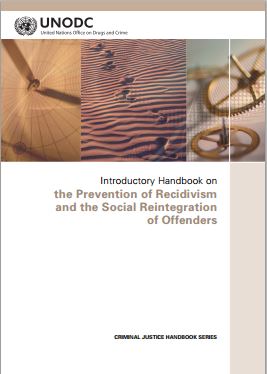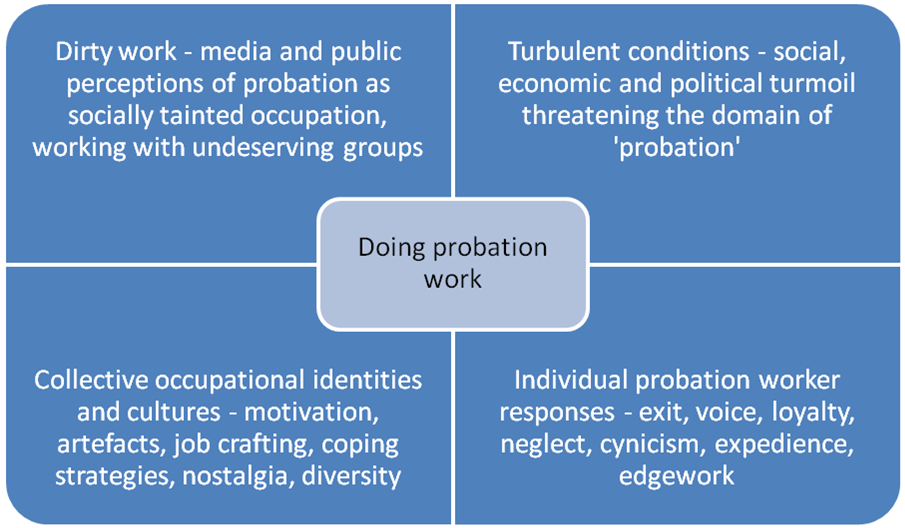« Transforming Rehabilitation – Under the Microscope ». British Journal of Community Justice, special ed.
Table of Contents
- 1 Editorial – Probation: Peering through the uncertainty , Paul Senior
- 9 Digging up the grassroots? The impact of marketisation and managerialism on local justice, 1997 to 2013 , Phil Bowen & Jane Donoghue
- 21 Transforming Rehabilitation – the risks for the voluntary, community and social enterprise sector in engaging in commercial contracts with tier 1 providers , Rebecca Marples
- 33 My Rehabilitation Revolution , Russell Webster
- 37 Transforming Rehabilitation and the creeping marketisation of British public services , Craig Harper
- 43 Payment by Results: hopes, fears and evidence, Carol Hedderman
- 59 Integrated offender management: assessing the impact and benefits – holy grail or fool’s errand? , Kevin Wong
- 83 Transforming Rehabilitation: evidence, values and ideology, Fergus McNeill
- 87 Risk and privatisation , Wendy Fitzgibbon
- 91 Transforming Rehabilitation: transforming the occupational identity of probation workers? , Anne Robinson
- 103 Why cultural differences between sectors mean probation won’t work as a commodity , Samantha McGarry
- 109 Practice values versus contract values: the importance of a culture of reflective practice , Becky Clarke
- 115 Working with offenders: someone has to do it…but not just anyone can, Rob Mawby & Anne Worrall
- 119 Still working with involuntary clients , Jane Dominey
- 123 Public protection? The implications of Grayling’s ‘Transforming Rehabilitation’ agenda on the safety of women and children , Beverley Gilbert
- 135 Mind the gap: quality without equality in Transforming Rehabilitation , Theo Gavrielides
- 149 ‘Transforming Rehabilitation’ for women? A view from the courts , Gemma Birkett
- 153 What will ‘count’ and be transformed for women in the criminal justice system? Rebecca Gomm
- 159 A social approach to the process of rehabilitation , Tracey McMahon
- 165 The implications of ‘Transforming Rehabilitation’ and the importance of probation practitioner skills, methods and initiatives in working with service-users , Jamal Hylton
- 175 Transforming Rehabilitation, a fiscal motivated approach to offender management ; Steven Calder & Anthony Goodman
- 189 A returning probation officer’s thoughts on the erosion of professionalism in offender management and the Transforming
- Rehabilitation agenda ; Julia Norton
- 191 A probation officer’s brief reflections on twenty years of rehabilitative transformation ; Mike Guilfoyle
- 195 Care leavers and the new offender management system ; Jonathan Evans
- 199 Letters to Grayling
- 215 Community Justice Files 31 ; Edited by Nick Flynn
- 223 Book Reviews ; Edited by Marian Duggan
http://www.cjp.org.uk/EasySiteWeb/GatewayLink.aspx?alId=7438 …


 The present Introductory Handbook on the Prevention of Recidivism and the Social Reintegration of Offenders is part of a series of practical tools developed by the United Nations Office on Drugs and Crime (UNODC) to support countries in preventing crime, implementing criminal justice reforms and strengthening the rule of law. These tools are meant to assist them in implementing United Nations standards and norms in crime prevention and criminal justice.
The present Introductory Handbook on the Prevention of Recidivism and the Social Reintegration of Offenders is part of a series of practical tools developed by the United Nations Office on Drugs and Crime (UNODC) to support countries in preventing crime, implementing criminal justice reforms and strengthening the rule of law. These tools are meant to assist them in implementing United Nations standards and norms in crime prevention and criminal justice.

 Je ne suis ni philosophe, ni historien, ni psychologue, ni expert. J’ai ma culture personnelle, faite de lectures sans doute mal assimilées ; mes conceptions, mes avis, qui peuvent différer de ceux de mes collègues. Je ne prétends pas avoir la science infuse, et il se peut que parfois/souvent je me trompe. J’espère que l’on me corrigera avec respect et sans animosité, même si Internet étant ce qu’il est, j’en doute.
Je ne suis ni philosophe, ni historien, ni psychologue, ni expert. J’ai ma culture personnelle, faite de lectures sans doute mal assimilées ; mes conceptions, mes avis, qui peuvent différer de ceux de mes collègues. Je ne prétends pas avoir la science infuse, et il se peut que parfois/souvent je me trompe. J’espère que l’on me corrigera avec respect et sans animosité, même si Internet étant ce qu’il est, j’en doute.